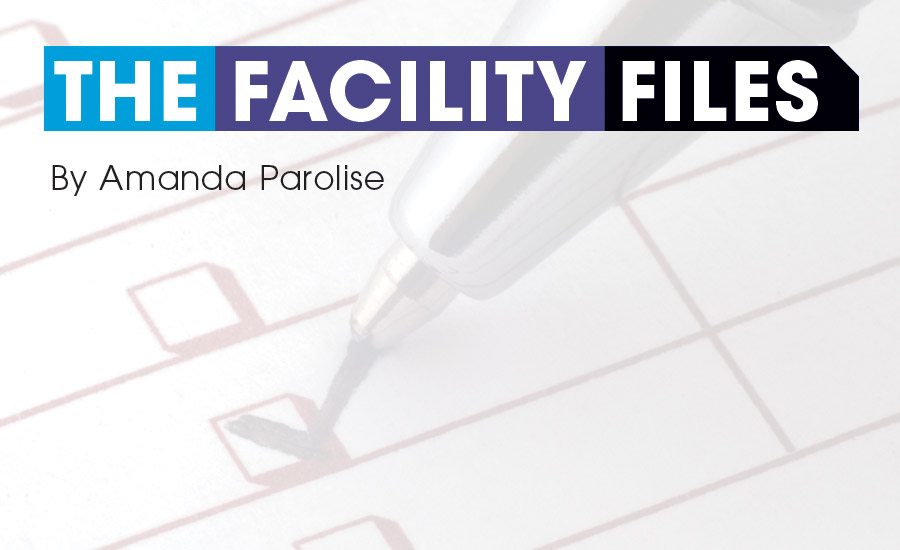This month’s Facility File will focus on the B2B May test for an addition of a standby AHU in a pharmaceutical building HVAC application. It would be very beneficial for the owner’s building facility manager and construction manager to read chapter 18, Clean Space facilities, in the 2015 ASHRAE Handbook - HVAC Applications to be knowledgeable of ASHRAE’s guidelines when preparing for a building program that will involve work within a clean space and the design parameters associated with this type of application. In addition, the in-house project management team and AHU equipment manufacturer should also review the various guidelines published by the International Society of Pharmaceutical Engineering (ISPE).
The owner’s facility management and construction management in-house group should also read chapters 36 through 43 of the 2015 handbook for O&M design guidelines to assist in preparing for this addition. This information combined with the owner’s own knowledge of operating a facility with numerous cleanrooms will assist the in-house design team in understanding intricacies of owning, operating, and managing this hybrid central multi-air handling system. It is also recommended that the owner-design team read chapter 59 of the same ASHRAE handbook titled HVAC Security, and also include a security consultant on-board to contribute to a safer building and processing design.
With all these design guidelines from ASHRAE, the team’s O&M staff will discuss specific building standards that need to be applied to this project. For this application, the pharmaceutical company has its own in-house O&M group to maintain all the buildings that make up the facility.
In the design phase of the project, the O&M staff (along with the construction department group) will want to contribute information to the in-house design engineer’s writing of the contract scope of work specification, and more specifically, to the following activities: service contracts, parts inventory, and as-built drawings requirements. Reviewing the design documents this O&M staff will want to be assured that equipment serviceability is adequate and safe (e.g., how does a standby AHU work in sync with five existing clean room AHUs).
The project delivery will be in-house design-build (DB) with management subcontracting general construction, HVAC and electrical system installation, and a 3rd-party commissioning and TAB firm. This contract basis of design is to incorporate into the pharmaceutical company’s cleanroom management and the enduser’s certification requirements. The facility staff will need specialized training to be current with the latest cleanroom application guidelines.
In the construction phase, the O&M staff will want to revisit the issues noted above during the design phase. Next comes the startup and commissioning phases, and the O&M staff will want to be proactive in assisting along with the D-B’s mechanical-electrical subcontractors and the ATC technician when completing startup. The O&M staff should also receive equipment training from the AHU manufacturer’s startup technician, along with system training using the O&M manuals and contract drawings (that will eventually become the as-built drawings).
Once the startup has been completed, the new ATC will be tied into the building’s BAS by the in-house ATC/BAS technician and programmed per the design intent. Once the 3rd-party commissioning and TAB consultant has completed the air and water balancing work, the in-house project team and subcontractors shall go through an automatic control system initial dry-run demonstration prior to bringing the new AHU online as a standby to any of the five existing air-handling systems. The ATC subcontractor should also begin collecting system performance by trending pertinent HVAC system and equipment and clean room certification data by trending the following:
[X] outdoor air dry bulb and wet bulb temperature [X] chilled water supply and return temperature [X] hot water supply and return temperature [X] space temperatures [X] clean room air quality [X] clean room space pressure [X] alarms [X] other control points
The facility’s O&M personnel will use a series of computer-generated touchscreen project checklists that allows his staff to confirm that the following facility files have been collected. This process should start at the beginning of construction and not at project closeout, so that the facility files can be inputted into a CMMS system. Touchscreen O&M checklists should include:
[X] equipment and filter shop drawings [X] O&M manuals, parts list, lubricants [X] troubleshooting tips [X] emergency standby change-over instructions
The O&M staff should review the subcontractor-produced piping and sheet metal-flue piping field fabrication/field coordination drawings prior to fabrication. Touchscreen service checklists should include:
[X] location of shutoff valves, ATC valves, and balancing valves [X] strainers [X] equipment and control devices [X] access for servicing equipment.
The training process should include not only specific HVAC system and equipment training but also emergency and security plan exercises. The water balancing of the air and the heating and chilled water and the associated final TAB report should be included in the preventive maintenance workorder system to routinely assure continuous space comfort. This will require the TAB subcontractor to provide the air and water balancing reports along with the associated system flow diagrams, noting quantities and pressures for rebalancing if necessary as part of the project closeout documents. Touchscreen training checklists should include:
[X] equipment [X] system [X] emergency plan [X] automatic controls [X] clean room certification management



